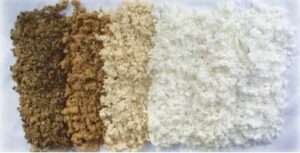Bleaching

The main objective of bleaching is to produce a brighter pulp. This is accomplished in chemical pulps primarily through lignin removal. The removal of other compounds is another objective of the bleaching process. These compounds include resins, fatty acids, and other extractives.
For many years the PDC has worked closely with the pulp and paper industry to develop new and effective bleaching sequences. We can perform a wide range of bleaching sequences on mechanical, recycled, and chemical pulps. The sequences may be comprised of a variety of stages, including chelation, enzyme, oxygen, ozone, chlorine, chlorine dioxide, extraction, and hydrogen peroxide stages.
Bleaching Equipment
- Medium consistency oxygen reactor
- Quantum reactor
- Laboratory bag bleaching apparatus (Cl2, ClO2, H2O2, E stage, H, FAS, etc.)
- Ozone generator and reactor
- 100% ClO2 generation reactor
- Stainless steel handsheet set-up
Bleach Effluent Analysis
- Residuals and pH
- Chemical Oxygen Demand (COD)
- Biological Oxygen Demand (BOD)
- Total Dissolved Solids (TDS)
- Color
Capabilities
- Oxygen delignification of hardwood and softwood pulps
- Optimization and kinetics of oxygen delignification
- Evaluation of effects of pulping on bleachablity
- ECF and TCF bleaching of hardwood and softwood pulps
- Bleaching of mechanical and secondary fibers
To begin working with us, visit our Working with the PDC page.
